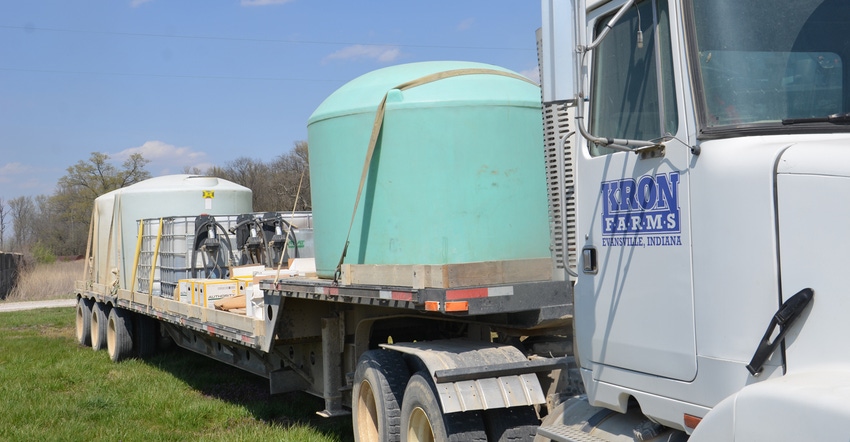
Minibulks for chemicals make life simpler than handling dozens of 2.5-gallon plastic jugs. If you use them during spraying season, do you know the rules that apply to use and storage?
Fred Whitford, director of Purdue University Pesticide Programs, led the charge on developing a publication that explains legal requirements and responsibilities related to minibulks. You can access Pesticide Minibulks: Filling, Maintenance and Containment, PPP-136, on the PPP website. Written copies are available from the Purdue Extension Education Store.
Key questions
Whitford scatters several key questions and answers throughout the publication so you can test yourself. Here are seven of those questions. They cover important information related to storage and handling. Refer to the publication for more in-depth information on regulations related to repackaging and refilling minibulks.
1. A storage room has 2.5-gallon jugs and a 35-gallon herbicide container. Are any of them considered bulk storage? No, Whitford says. No single container holds more than 55 gallons. The Environmental Protection Agency and the Office of Indiana State Chemist defines a bulk pesticide container as anything that can hold more than 55 gallons of material.
2. A farmer has a single 265-gallon minibulk on the farm used as a shuttle. Is it considered bulk? Yes. By definition, it’s over 55 gallons, so it would be considered bulk; rules that apply to bulk storage kick in, Whitford says.
3. Does putting minibulks on a trailer exempt them from the 30-day storage rule? No. The rule states that minibulks stored on a farm or at a retailer for more than 30 days must be in secondary containment in case of a spill, Whitford says. If you have pesticide minibulks for more than 30 days, whether on a truck, the ground or anywhere, secondary containment is required.
4. Are sprayer tanks considered minibulks? No. “Sprayers are application equipment, so tanks on sprayers do not fall under the bulk containment rule,” Whitford says.
5. A farmer has a 110-gallon minibulk that only has 25 gallons of product in it. Can it be left out of containment for over 30 days? No. It’s the capacity that determines whether containment rules apply, Whitford says. If a 110-gallon minibulk with 25 gallons in it is stored longer than 30 days, it still must be stored within secondary containment.
6. When does the clock start on the 30-day exemption period before secondary containment is needed? If it’s a prefilled minibulk that your dealer delivers, the 30 days starts on the day of delivery. If a retailer is refilling minibulks, it starts on the day it is refilled.
Whitford notes that if OISC inspects the facility at your farm or a retail facility, the inspector will likely ask for proof of date of delivery or filling. Keeping good records can prevent lots of headaches.
7. Can a farmer use a pad associated with stationary tanks as containment for minibulks? Yes, if it meets the requirements, Whitford says. Indiana regulations allow the use of an operational pad for this purpose that is 10 feet by 20 feet and can hold 750 gallons.
About the Author(s)
You May Also Like




